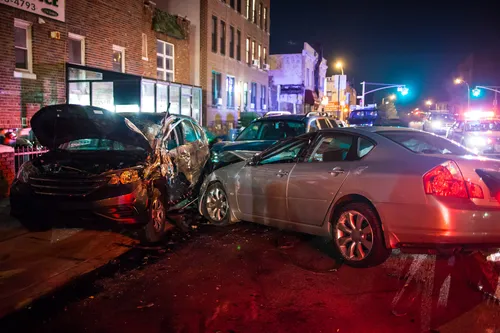Blind spots are a serious issue on the road. According to the National Highway Traffic Safety Administration and reported by HowStuffWorks, more than 800,000 blind spot accidents occur each year in the United States, with 300 of them resulting in fatalities.
While a car’s blind spot is dangerous, a truck’s blind spot is larger and more dangerous. Here’s what you should know regarding the truck’s blind spots.
There are three major blind spots
Truckers may have larger mirrors to help prevent accidents, but this doesn’t render the truck impervious to accidents. There are three blind spots to be aware of when you’re driving near a large truck:
- Directly ahead of the truck
- Right behind the truck
- Immediately next to the truck, especially on the right side
Most of the time, the truck’s blind spots can extend several lanes.
You can tell when you’re in a truck’s blind spot
There’s a simple way to tell if you’re in a truck’s blind spot. If you’re unable to see truck driver’s reflection in the side mirror, then you should assume that you are in the truck’s blind spot, increasing your risk of ending up in an accident with the truck.
Drivers should avoid tailgating large trucks
You should avoid tailgating whenever driving, but it is especially true for large trucks. Truckers are unable to see you when you’re right behind the vehicle, so be sure to keep a four-second distance between you and the truck. If you’re driving in inclement weather, increase the distance between you and the trucker.
Be aware that truckers are prone to human error
Truckers are incredibly skilled, but they are still very prone to human error, especially when they are suffering from issues such as sleep deprivation. There are a variety of factors that can lead to collisions, especially if a vehicle happens to be in any of the truck’s blind spots:
- Speeding
- Failure to yield
- Incapability to utilize signals
- Inability to proceed with caution when making a wide-angle turn
- Ineptitude to check blind spots repeatedly
Any of these factors can cause an incident that the trucker is unable to recover from, leading to a collision with an unsuspecting victim.
The trucking industry exacerbates rampant issues
As mentioned earlier, the trucking industry’s drivers face a variety of issues. There’s a trucker shortage, meaning truckers are forced to work longer hours and become more likely to succumb to sleep deprivation. This can lead to truck drivers becoming forgetful about checking their blind spots periodically.
Truck drivers are less likely to compensate for sudden road incidents
Sometimes accidents may be the fault of the driver of a non-commercial vehicle. For instance, the driver of a car may attempt to pass the vehicle ahead of them without properly confirming that it is safe to pass. On the opposite end of the road is a commercial vehicle, but that doesn’t stop the car driver from passing the slow-moving vehicle.
As a result, the truck collides head-on with the driver’s vehicle, because the truck is unable to compensate for the driver’s mistake. The trucker doesn’t have enough time to swerve or slow down, as slowing down takes far longer for a large truck compared to a typical consumer vehicle.
Consult a personal injury attorney if you’ve been in a vehicle accident involving a truck
If you’ve been in an accident with a truck, then it’s likely that you’re suffering from injuries and seeking monetary compensation for medical expenses, work leave, and the loss of quality of life. If so, then you should immediately consult a personal injury attorney. A personal injury attorney will work to ensure that you receive the compensation you deserve, all while you focus on resting and recovering from your injuries.


